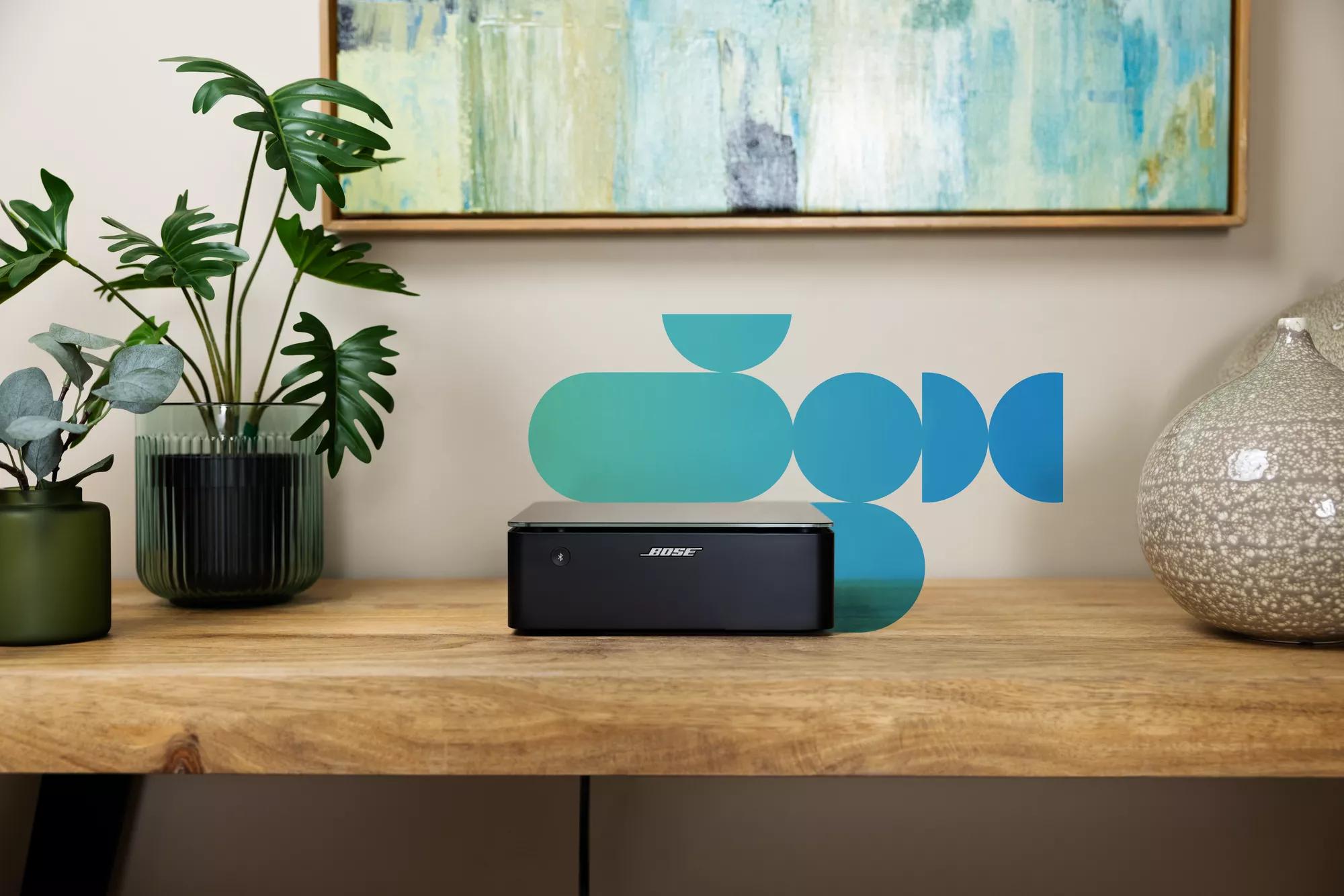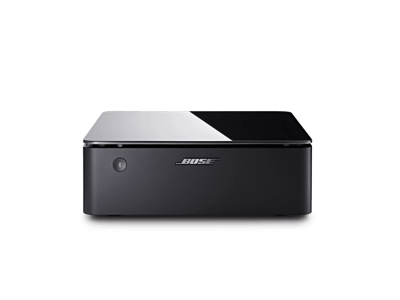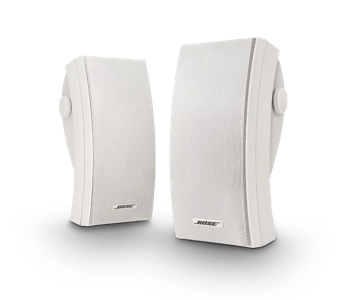Maybe you’ve just rediscovered all your CDs boxed up in the basement or spend every weekend thumbing through albums at the local record shop. The more audio formats you own, the more difficult it can be to find one way to play them all. You may keep a dusty CD player in your home office, a turntable in the living room, and a smart Bluetooth® speaker in the kitchen to stream your current favourites.
Coming later this month, the new Bose Music Amplifier lets you marry your analogue and digital music collections and equipment, putting them all at your fingertips — and in one place.
Coming later this month, the new Bose Music Amplifier lets you marry your analogue and digital music collections and equipment, putting them all at your fingertips — and in one place.
Analogue vs. digital sound
Vinyl records, audio cassettes, and even 8-tracks are all analogue recordings, while CDs, MP3s, and any songs you’re streaming from your computer or a music service are digital. But what does that really mean, and how does it impact your ability to enjoy music?
Without getting too deep in the technical weeds, the difference between analogue and digital formats is how the audio signals are recorded, translated, and stored. When analogue recordings are made, sound waves are transferred onto magnetic tape in their original analogue form. With digital technology, the analogue waves are converted into binary numbers — ones and zeroes — that are then stored on a hard drive, disc, or other device.
When you play a vinyl record, the sound waves do not have to be converted from binary numbers. They’re played back as they were recorded, so what you’re hearing could be a more accurate representation of what was recorded. But they come with downsides too. Vinyl recordings, for example, can also have pops, crackles, and hisses when you play them back, because the physical recording often becomes damaged and degrades with age. Magnetic tape can degrade over time, too.
Digital recordings are generally cleaner and stay that way longer. In fact, they could last forever if they’re enjoyed through a streaming service or stored on a device. Furthermore, digital music is far easier to manage and maintain, and it fits a mobile-savvy society almost perfectly.
As the technology improves, the difference in sound quality becomes less and less distinct, but some listeners — especially vinyl purists — may still prefer the warmth and richness that vinyl records can provide.
Marrying analogue and digital
As digital music came to dominate over the past two decades, analogue collections largely became consigned to attics, basements, or even junk heaps. However, with the Bose Music Amplifier, you can bring them all back together again into one happy family.
The amplifier can handle both analogue and digital formats. Its RCA inputs allow you to connect external devices like turntables,* CD players, and cassette decks, while its Wi-Fi® capabilities can connect to your cloud-based music library, streaming platforms, and online radio stations. And, just like other Bose Wi-Fi-enabled smart speakers, control your music from your mobile device through a Bluetooth connection using the Bose Music app, Apple Airplay, Chromecast, or Spotify Connect. The same goes for your tablet or computer. The Bose Music Amplifier also has an Ethernet port for an optional wired connection to your home network, and an optical input.
* Pre-amp may be required. Not included.
The amplifier can handle both analogue and digital formats. Its RCA inputs allow you to connect external devices like turntables, CD players, and cassette decks.
The Bose Music Amplifier can support two pairs of passive speakers, including freestanding floor speakers, bookshelf or tabletop speakers, in-ceiling or wall-mounted speakers such as the Virtually Invisible® 791 in-ceiling speakers II, or outdoor speakers such as 251® environmental speakers. Powered speakers have their own built-in amplifiers and consequently don’t need a separate amplifier. Basically, if your speakers don’t need to be plugged into a wall outlet, then they need an amplifier to power them.
The Bose Music Amplifier also allows you to customize your listening experience further through two audio equalization controls. Using the Bose Music app, you can adjust the bass and treble levels, depending on your personal preferences or the kind of music, whether it’s soulful tunes from an acoustic singer-songwriter or big beats you brought back from Ibiza.
So bring those boxes of CDs up from the basement, pick up a vinyl copy of that record you never thought you’d find, and make your ultimate playlist on a streaming service. The Bose Music Amplifier can marry all of your music together, so you’ll no longer have to make the choice of analogue vs. digital sound, and they can live happily ever after.
When the Bose Music Amplifier arrives, you will be able to marry all of your music together and no longer have to make the choice of analogue vs. digital sound.
Product availability may vary by country.




